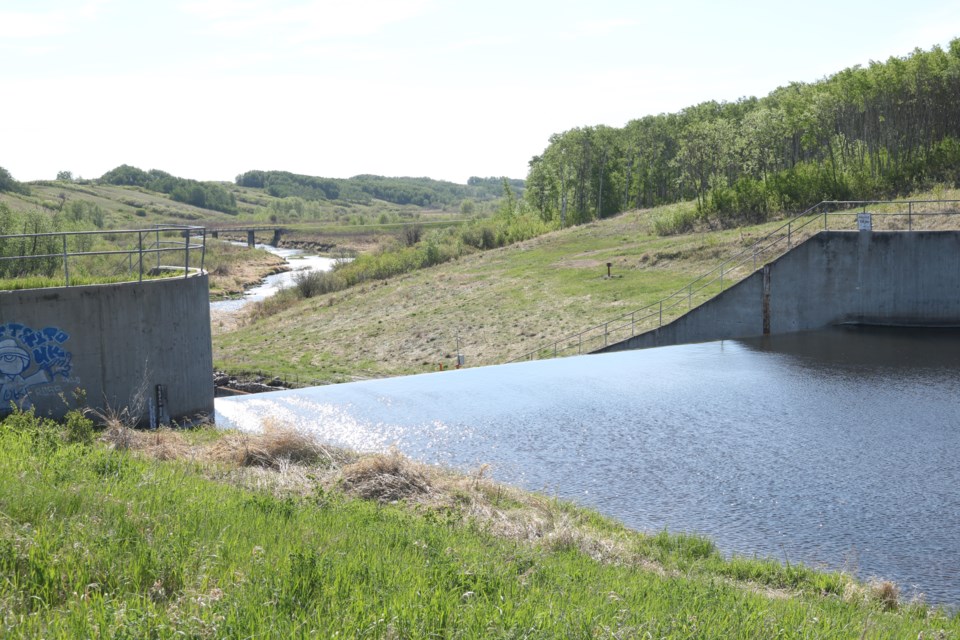Results from the province’s whirling disease monitoring program show that in at least one infected river in the province, the disease is harming fish populations.
Whirling disease is caused by a microscopic parasite that also relies on an aquatic worm host to complete its life cycle. It can cause several deformities in fish that affect their ability to survive and reproduce, including bent or crooked spines and a “whirling” or “tail-chasing” swimming behaviour. Some fish species are more susceptible than others: rainbow trout, cutthroat trout, brook trout and mountain whitefish are most vulnerable, whereas bull trout and brown trout are impacted less severely.
In Alberta, the disease was first found in 2016 in Johnson Lake in Banff National Park. In response to this finding, the province started a whirling disease monitoring program. Efforts started in 2016, and most of 2017 and some of 2018 were spent collecting fish samples to test for the parasite, explained Clayton James, a senior fisheries biologist with the province.
“Something like 10,000 fish samples were collected to understand exactly in the province where the parasite is located,” said James. “That was a snapshot of two years.”
While the parasite has been identified in four major rivers in the province – the Bow River, Oldman River, North Saskatchewan River and Red Deer River – that does not mean that all these watersheds are infected. Within Wheatland County, the Rosebud River is unlikely to host an infection because it is not known as a significant trout fishery, though it has not been tested, explained James. Eagle Lake will not be affected by the disease, because it is mainly a pike, walleye and yellow perch fishery, he added.
Yet in 2016, whirling disease was found in the Bow River near Willow Island and Johnson Island, located south of Strathmore near Carseland.
In 2019, the monitoring program was focused around the Crowsnest River to determine if fish there are actively showing signs of the disease. The study found high parasite levels, observable signs of whirling disease in wild trout and elevated mortality in young-of-the-year rainbow trout there due to whirling disease.
“We even found some fish that were whirling, which is where the disease derives its name,” said James.
These results show rainbow trout populations in the Crowsnest River are being impacted by the disease, noted James. “We’re looking at those results, and we’ve come to the conclusion that in parts of that river, which is a very important rainbow trout fishery in Alberta, we are seeing evidence that whirling disease is occurring,” he said.
Future monitoring efforts will be conducted to see if the disease is as severe in other rivers infected by the disease-causing pathogen.
“Now that we know that it’s happening in at least one river, we need to begin looking at other rivers to see if they have the same conditions necessary for what we call disease outbreak,” said James.
Anglers and other recreational users such as kayakers can embrace good stewardship behaviour to limit the further spread of the parasite.
“We’ve detected the parasites in a number of water bodies in Alberta, but there are many water bodies where we haven’t detected it yet,” said James. “Anglers can help limit the spread if they clean, drain and dry their gear between fishing trips.
“Make sure you get that organic gear off your gear, rinse it and let it dry for 24 hours, preferably in sunlight.”
These practices are not beneficial for just whirling disease, as they will stop the spread of other unwanted aquatic invasive species as well, he said.
Also, when harvesting a fish, anglers are asked to clean it off site and dispose of it in a designated cleaning area or the garbage.
“In the U.S., they found that the disease was spreading and becoming much worse when people returned carcasses to the water, because then you are releasing the parasite back into the watershed.”
Land stewardship activities could have an impact on the spread of the disease as well, said James. The worm host, which produces the life stage of the parasite that infects the fish, prefers water temperatures between 10 and 17 degrees and habitats with high fine sediment. If the vegetation around a stream is impacted, that will cause higher sedimentation and warmer temperatures in the stream, and therefore increase the likelihood that the worm host will be located in that area, he said.
“One of the things that the U.S. has done in the past, is they have actually tested if we can repair habitat; can we send a reduction in the worm host, and therefore a reduction of the parasite in the overall system,” said James. “They’ve shown some moderate success – besides having an overall improvement of the habitat for the fish, it can, in some situations, reduce the severity of the disease as well.”



